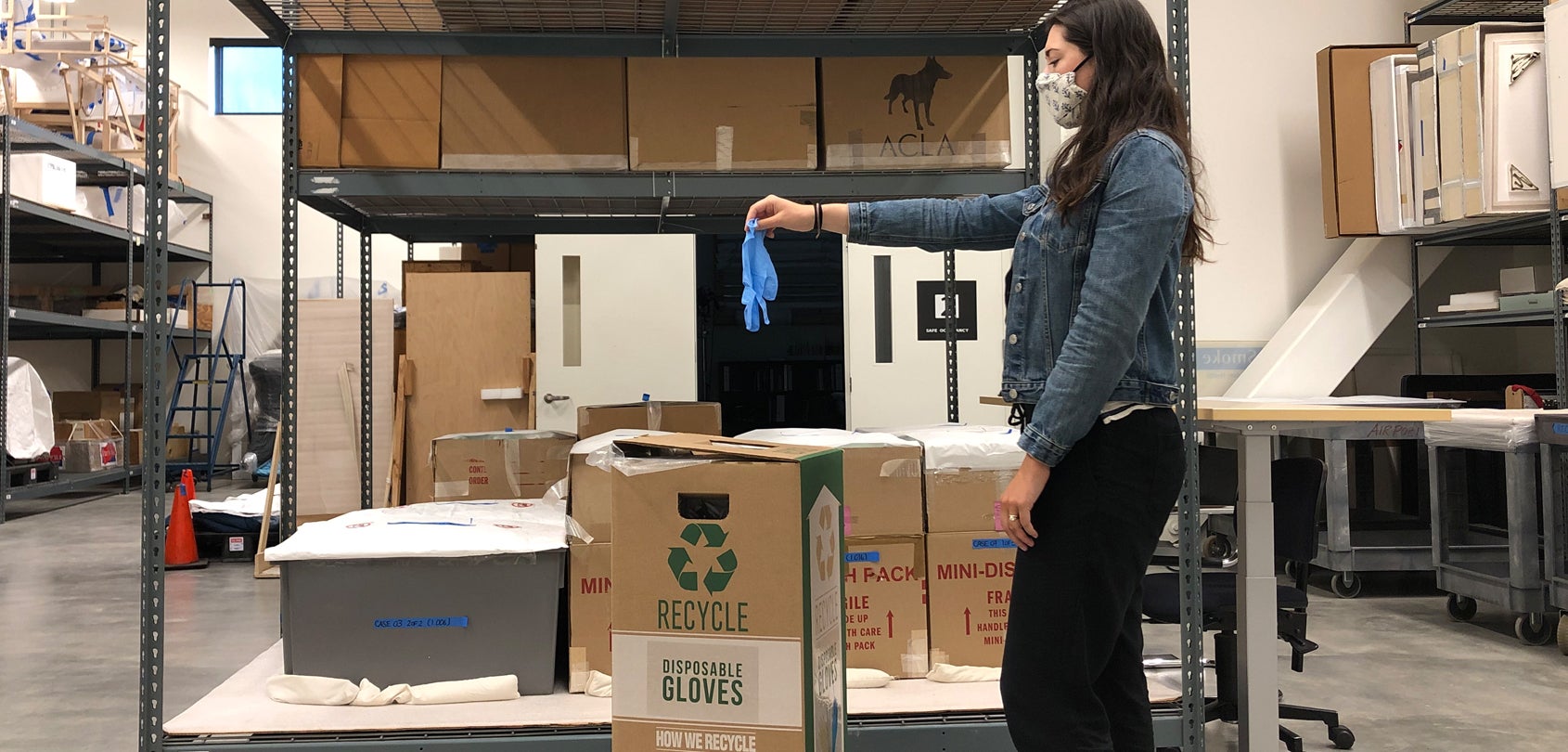
Flying Green at SFO Museum: Our Path towards Sustainability
Climate change is very much something we experience in California, as we have sadly become accustomed to an annual fire season that has expanded from May through October, California’s dry season. In response to global warming and the environment’s call for help, we have been examining strategies SFO Museum can take toward sustainability. The Green Museum, by Sarah Brophy and Elizabeth Wylie, inspired me: museums are known to be holders of knowledge, preservers of history, and stewards for the community, but what is the point if we don’t take care of our environment? If we don’t work on saving our planet, then why do we work to save our museum collections?
Hi, I’m Sara, the Associate Curator of Museum Affairs at SFO Museum. I unknowingly began my sustainability journey when I was in elementary school and there was a reduce, reuse, recycle campaign on campus. I carried that mantra with me throughout life, but it wasn’t until I joined SFO Museum seven years ago that I began advocating and broadening my sustainability practices. Through participating in sustainability committees and attending various museum conferences, I was driven to partner with colleagues and learn more about how to make sustainable changes to our organization’s practices.
Since at least 2011, SFO has had a climate action plan and is leading the charge in airport sustainability efforts in various ways: plastic bottle ban, using sustainable aviation fuel, and initiatives for healthy buildings. SFO Museum is very lucky to be a part of an organization prioritizing sustainability, and with the Airport’s support, we have taken steps toward greener museum practices. Taking care of a permanent aviation collection of over 140,000 objects, creating roughly 30 new exhibitions a year throughout the terminals on a broad range of subjects, moving our administrative offices and storage spaces into a new building on Airport property, and helping to manage the permanent public art collection (SFAC) at SFO keeps staff busy, but can also generate a significant amount of waste. The Museum has implemented several approaches to offset this, by retaining exhibition furniture for reuse, recycling paper materials as much as possible, and reusing packing materials. However, there are many new ideas the Museum has learned and put into action while embarking on our path towards becoming more sustainable.
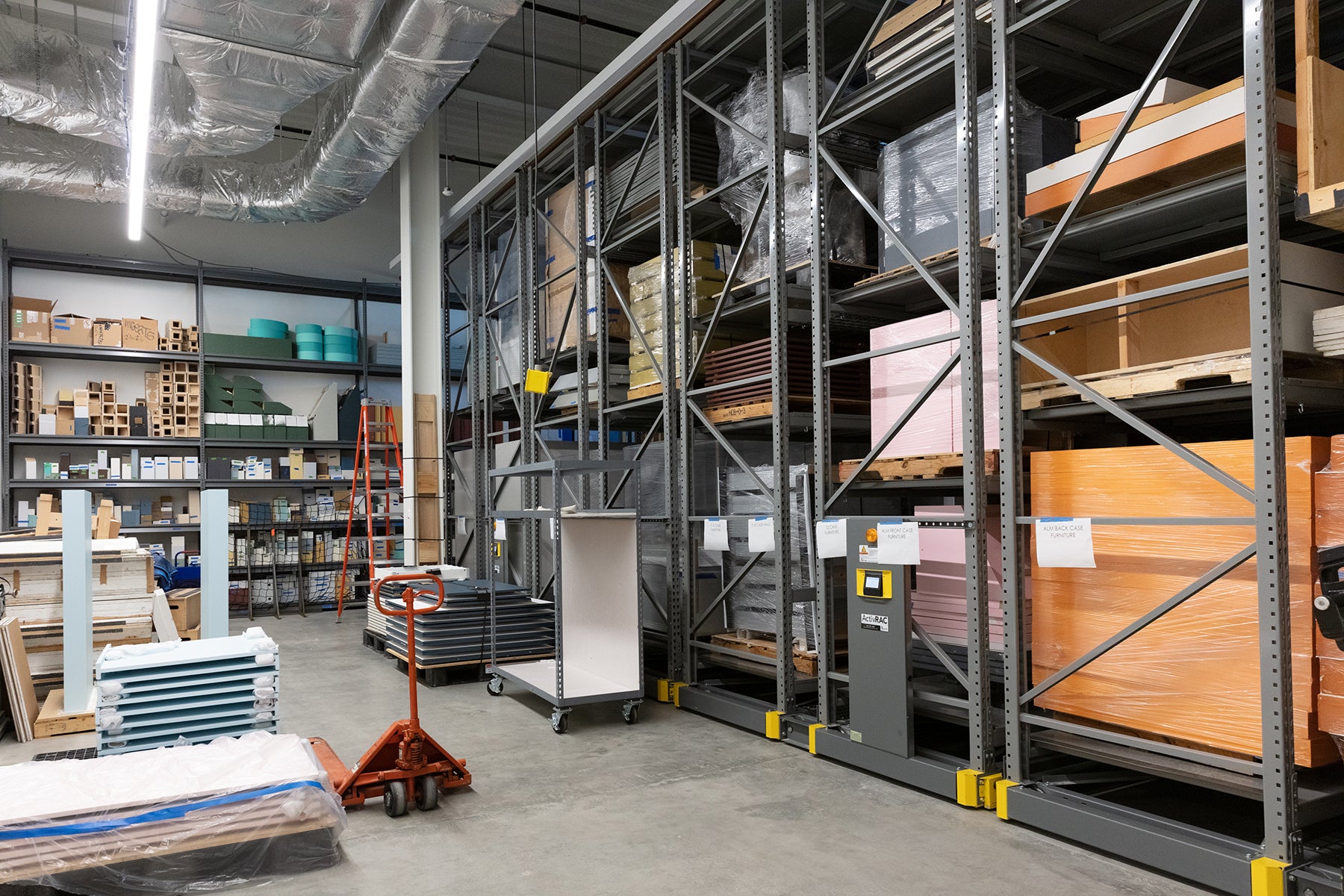
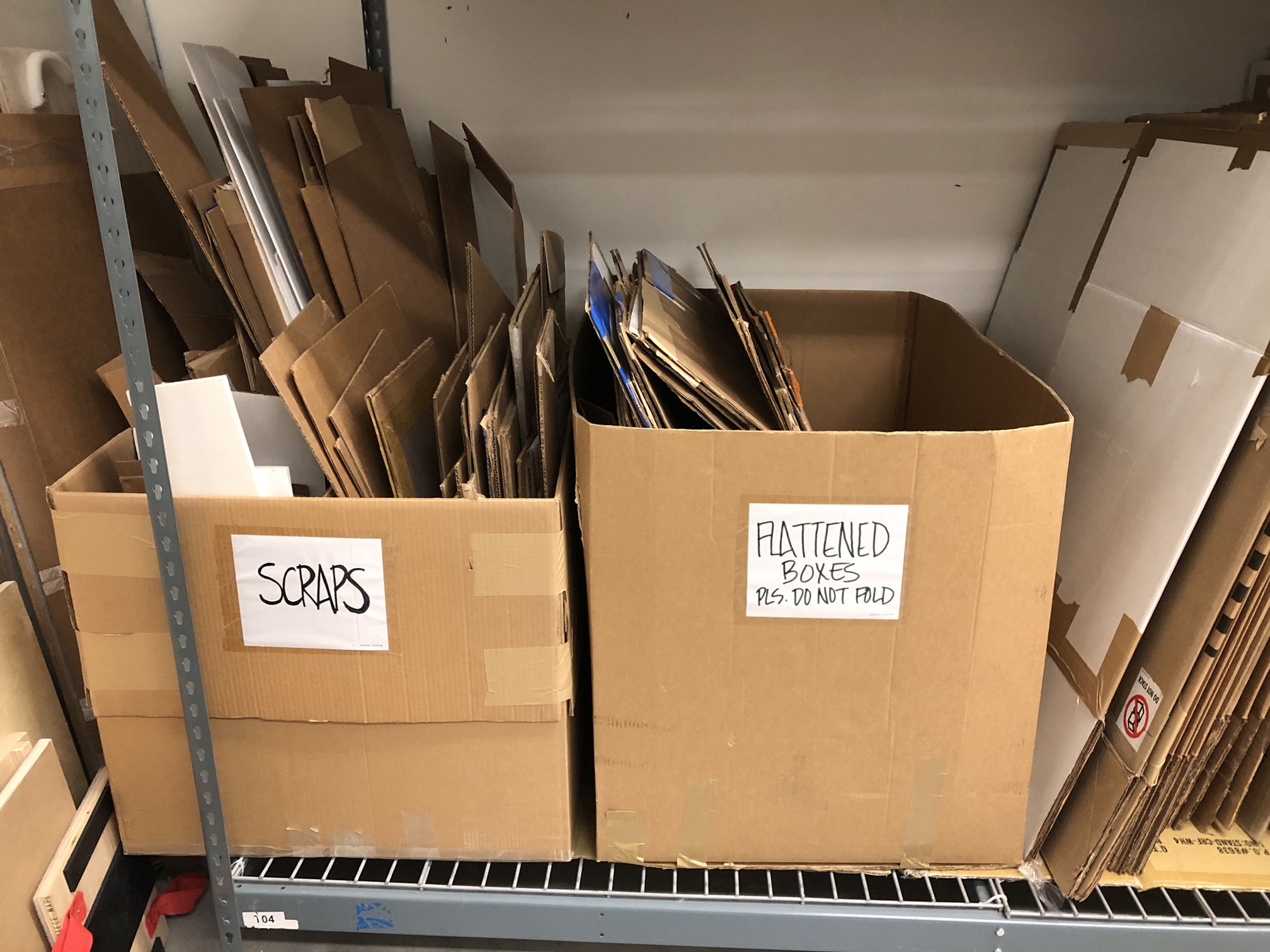
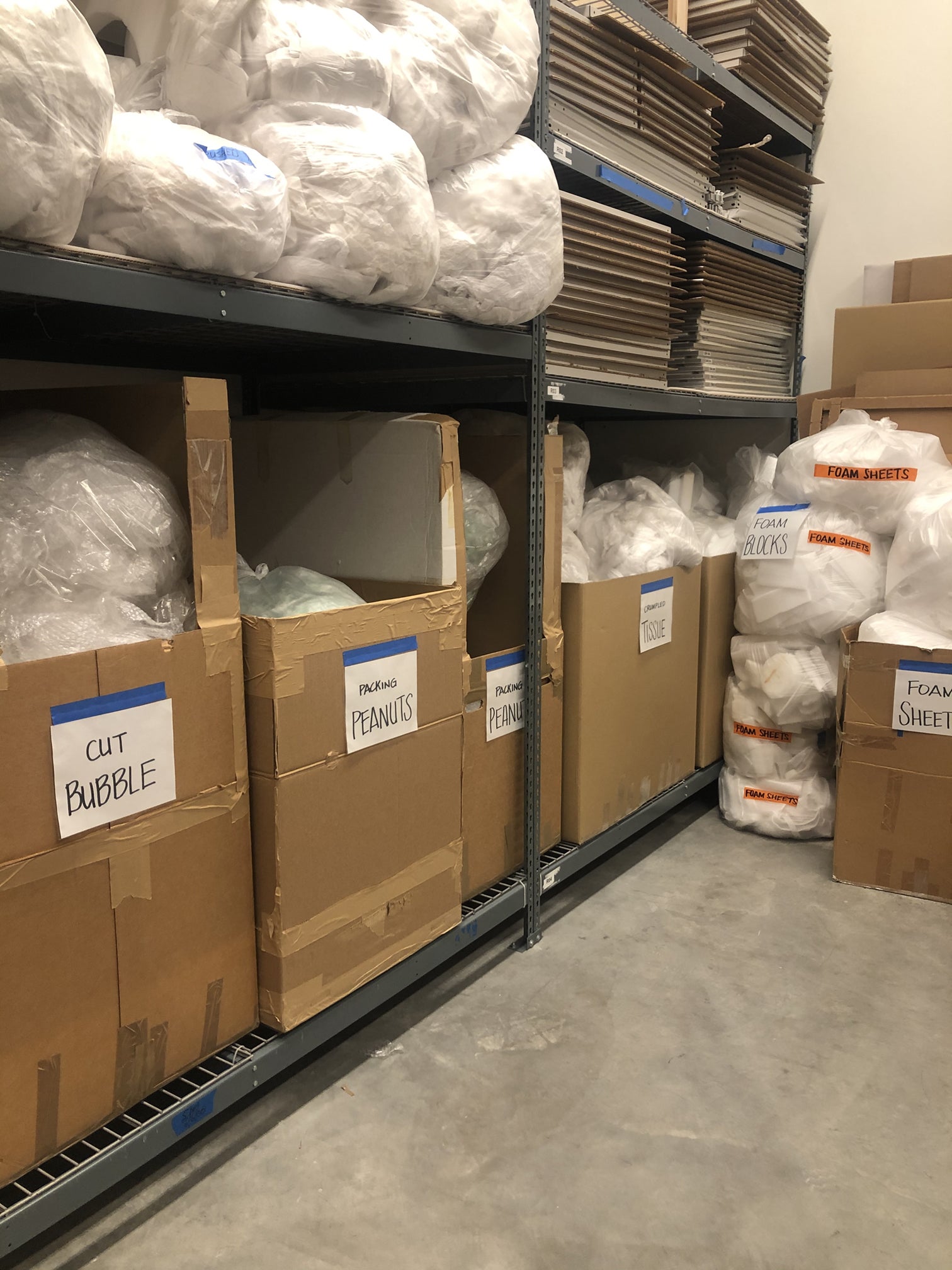
[images left to right]
Our Furniture Storage room houses exhibition furniture such as display decks, risers, and object mounts that we can reuse multiple times | An example of packing materials that we reuse for short-term object storage or transport – cardboard boxes and bubble wrap
Part of our sustainability journey included moving into a new four-story building in June of 2018. Now certified by the U.S. Green Building Council with a LEED Gold rating (Leadership in Energy and Environmental Design), it was strategically built following the Airport’s healthy building standards by consolidating numerous departments on a smaller footprint, for Airport offices (upper levels) and the Museum workshops (lower level). As part of the Museum’s contributions toward sustainability, we considered repurposing existing equipment and office furniture from the building previously occupied by the Museum, maximizing space and storage, utilizing energy-efficient lighting systems, and digitizing files to reduce paper consumption. Prior to the move, we itemized and logged every piece of furniture and equipment in the over 30,000-square-foot former building, and we mapped out where to relocate these items in the new building. We also reached out to Airport colleagues to let them pick up and reuse anything we couldn’t take along with us. This process meant that fewer items were sent to the landfill and many items got a second life!
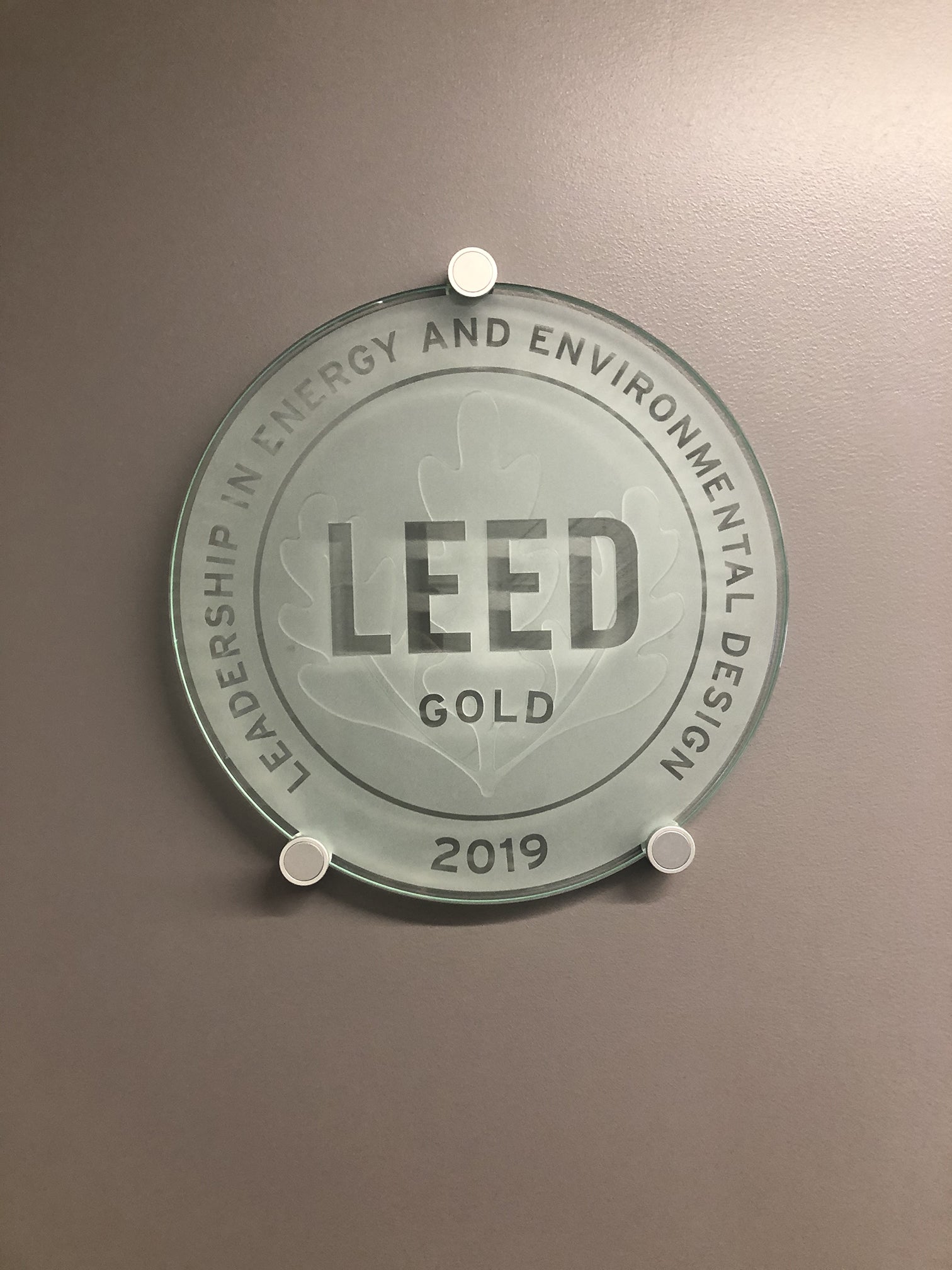

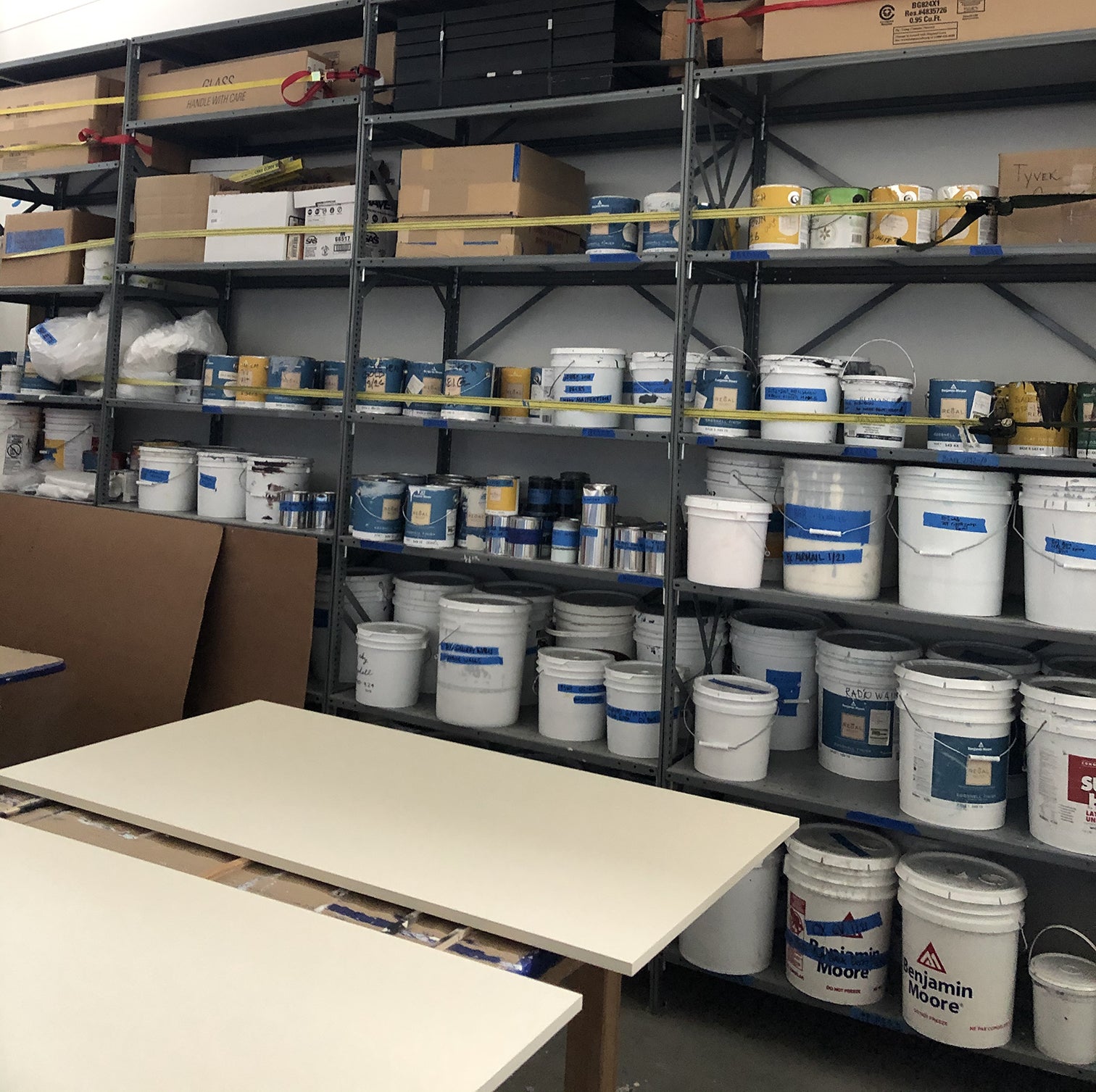
[images left to right]
LEED Gold certification plaque in lobby of the new building | Office furniture log for the move to the new building in 2018 | Repurposed shelving units from the former Collections Storage in the new Paint Shop, post-move
Prior to the move, the Museum maintained good practices in recycling and reusing exhibition and packing materials, but we hadn’t necessarily thought about our waste stream. When we moved into the new building, we worked with the Airport’s waste management company to determine the most appropriate collection bins for the various waste produced by the Museum. From there, we internally came up with a plan to have all waste bins within the Museum workshops match those of the collection bins in our loading dock. We went from landfill and the occasional recycle bins to multiple, easily identifiable receptacles in each room. This helps staff quickly dispose of waste appropriately and ensures no cross-contamination between waste streams when the bins are consolidated for removal.
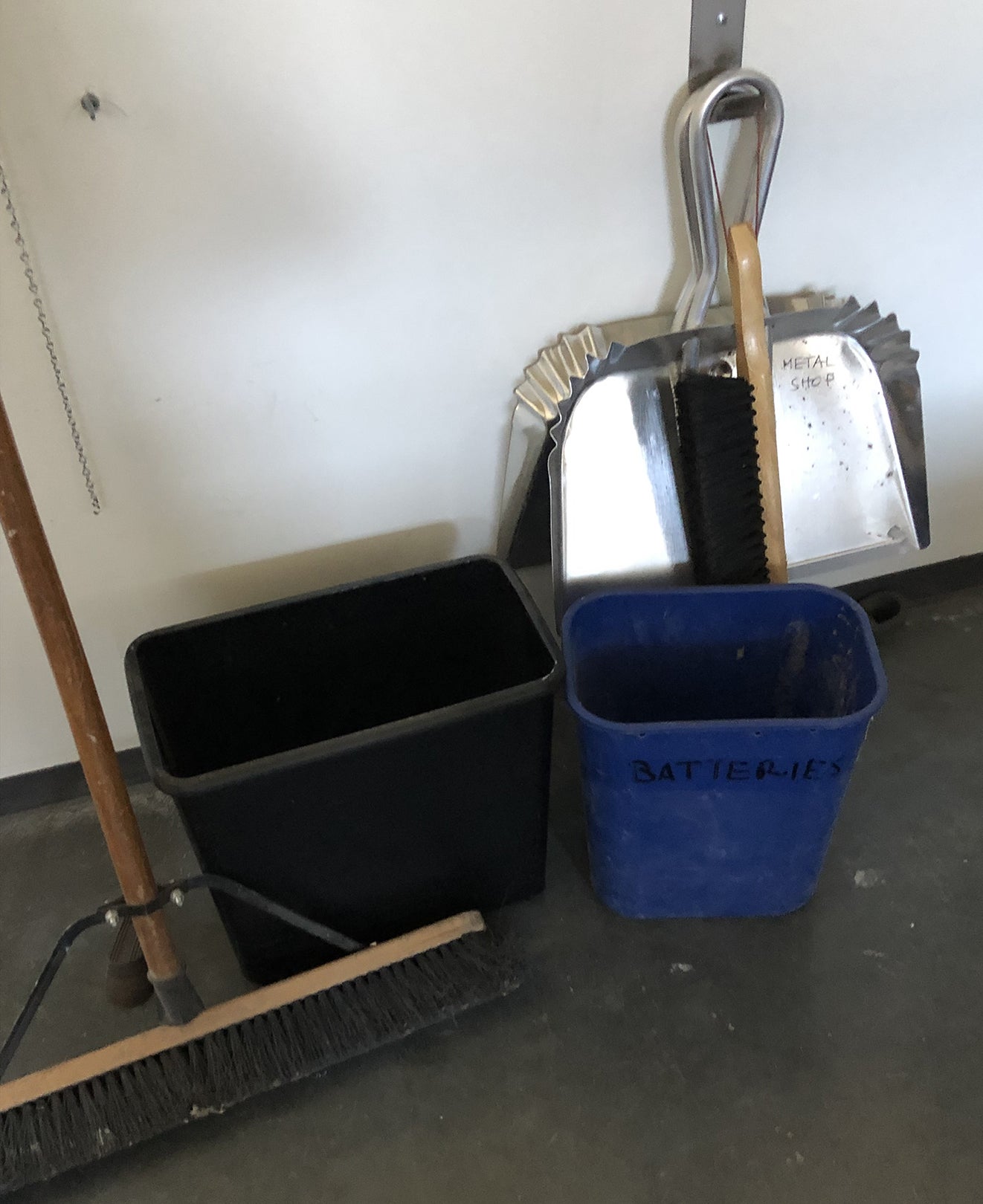
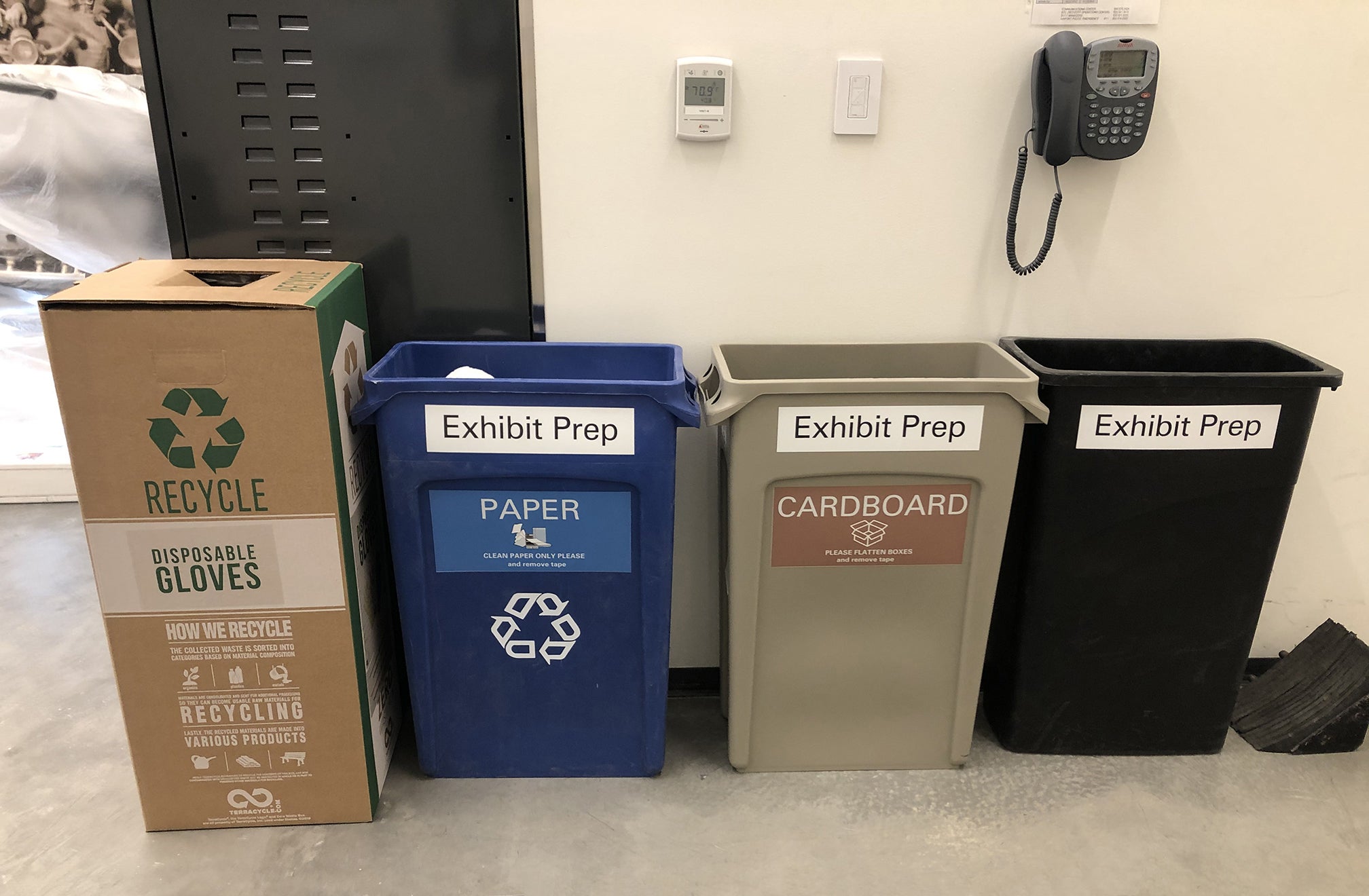
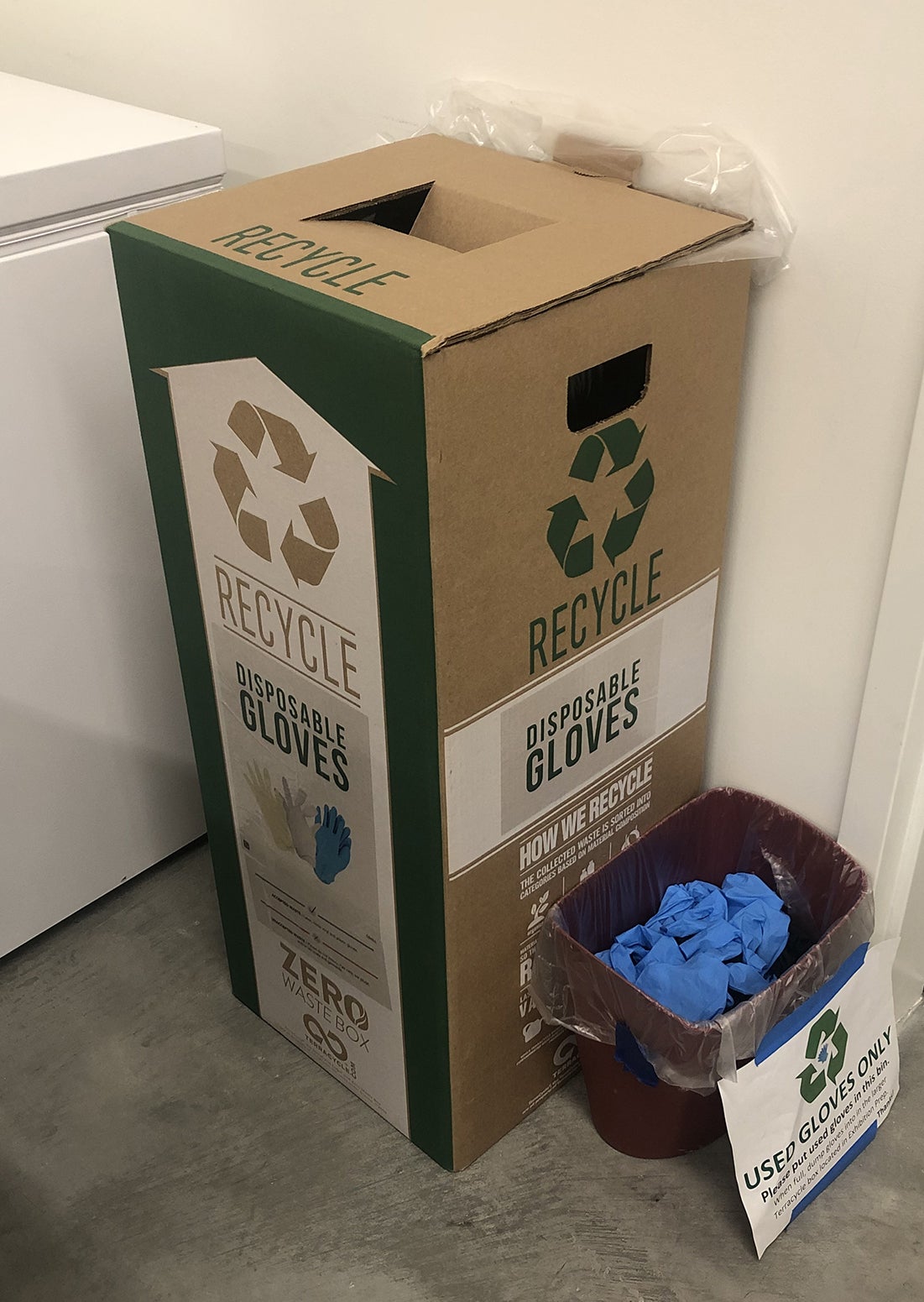
[images left to right]
Old unlabeled small bins and our new, clearly labeled larger bins | We have two large glove recycling boxes along with smaller bins located throughout our workshops
Gloves presented another challenge. To protect museum objects from the oils and residue found on even the cleanest of hands, and to protect hands from any unknown materials on objects, gloves must be worn by anyone handling museum artifacts. Most museums go through thousands of gloves every year in order to protect themselves and preserve objects. So, how can we be sustainable when we send so many gloves to the landfill each year?
In 2017, I was fortunate to find an answer while attending a session about sustainability at the California Association of Museums conference held in Sacramento. Shortly after the conference, we started a pilot project to see if participating in one of several glove recycling programs would work for us. Staff felt excited about being able to divert gloves from the landfill and gladly used the designated glove recycling bins. The success of our pilot project led to its expansion to other Airport departments, including teams in TSA and Facilities!
In addition to our internal sustainability efforts, we produce exhibitions that encourage the traveling public to think about their own actions. Furthermore, we actively collect objects for our permanent collection that document the efforts airlines are making toward going green.
The Art of Recology: The Artist in Residence Program 1990–2013, a 2013 exhibition presented in collaboration with Recology in Terminal 3, displayed artworks created by artists who scavenged trash and discarded items at Recology’s processing facility in San Francisco. The program has created a diverse community with a common goal of creating a more sustainable world.
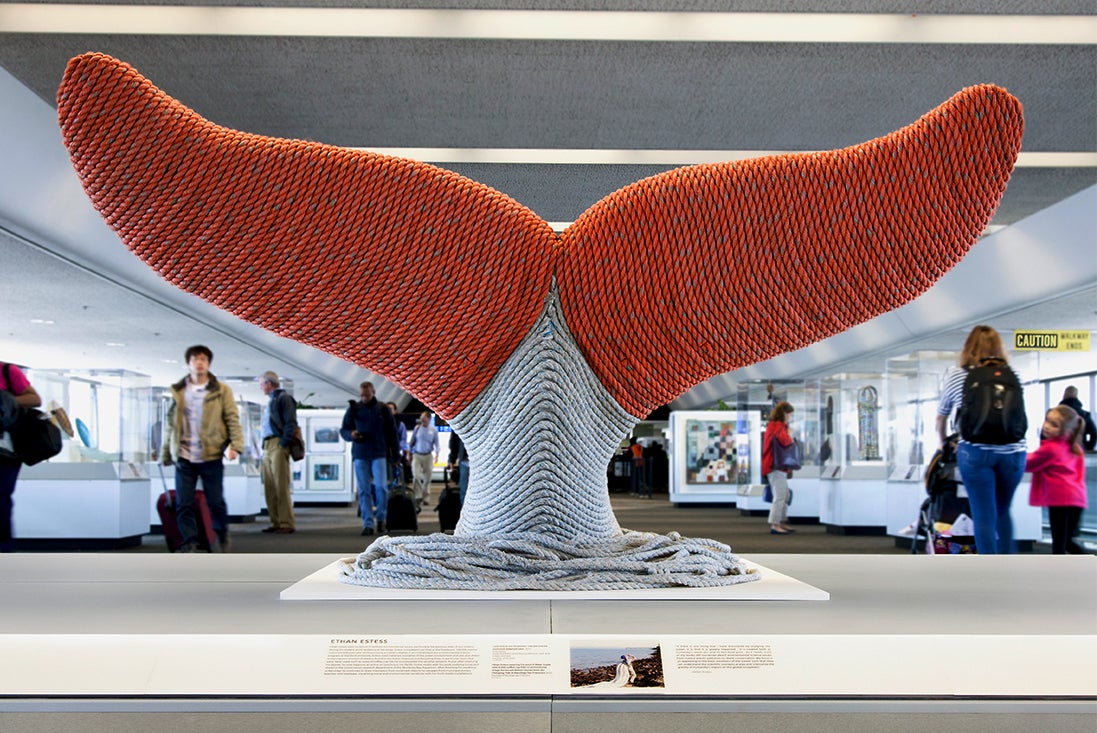
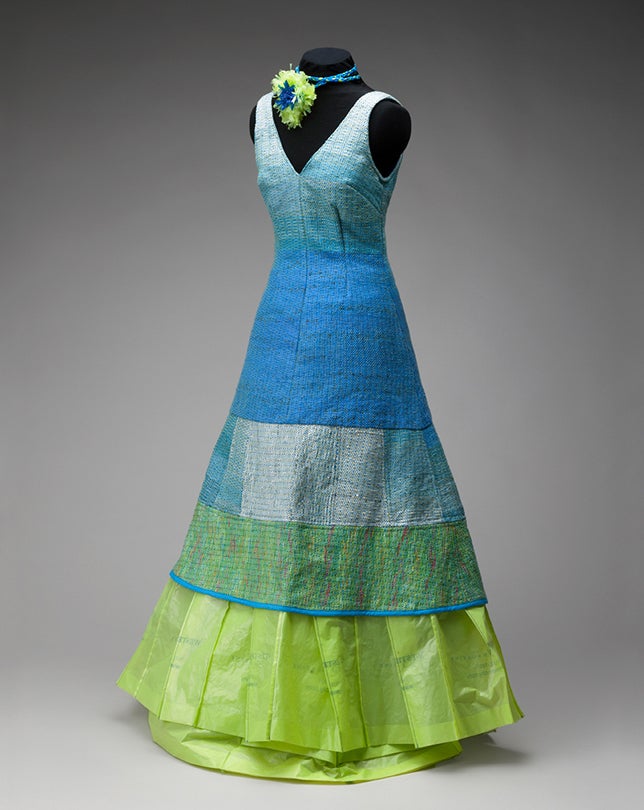
[images left to right]
Last Dive at the Farallones 2013; Ethan Estess; wood, Styrofoam, wood flooring adhesive, super glue, screws, and rope | Evening News 2004; Sandy Drobny; plastic bags used to deliver The Wall Street Journal and The New York Times
Alejandro Durán: Washed Up, a photography exhibition shown in Terminal 3 in 2019, featured the work of artist Alejandro Durán. He photographs various waste he collects and makes into assemblages on site as a reminder of the dire consequences of worldwide environmental pollution.
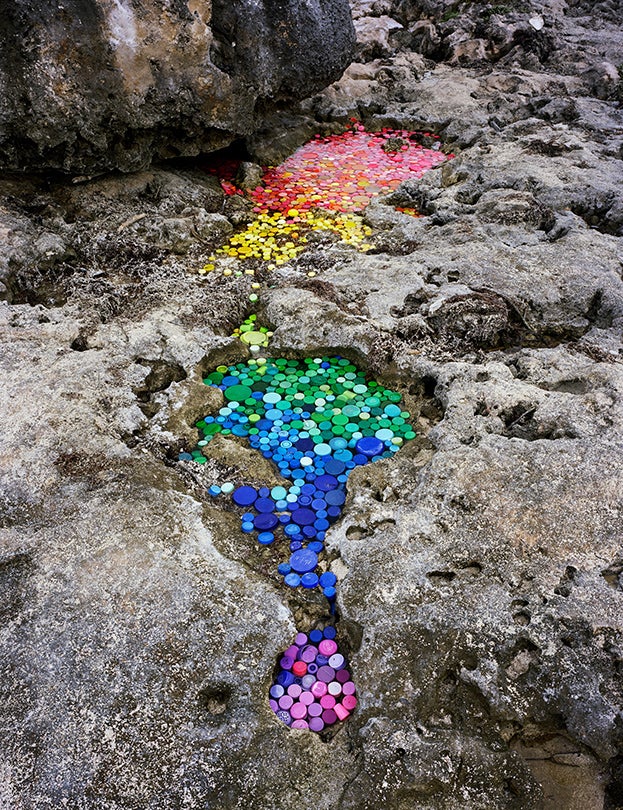
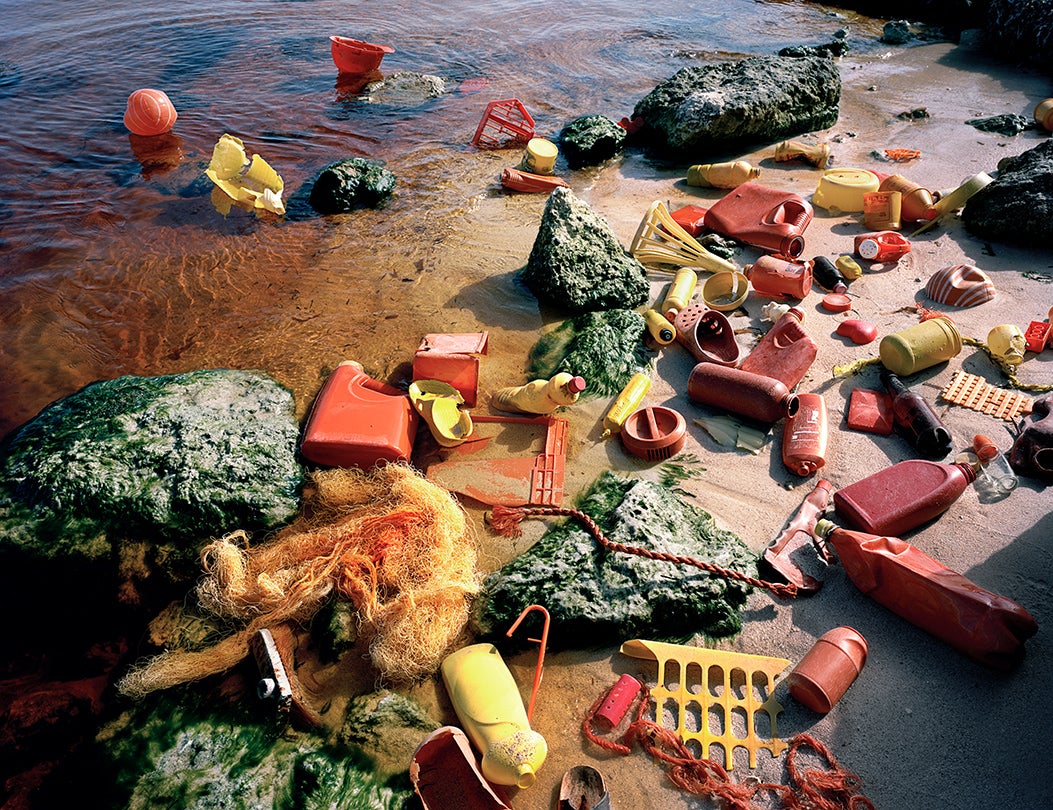
[images left to right]
Derrame (Spill) 2010 | Atardecer (Sunset) 2013; Alejandro Durán; Courtesy of the artist
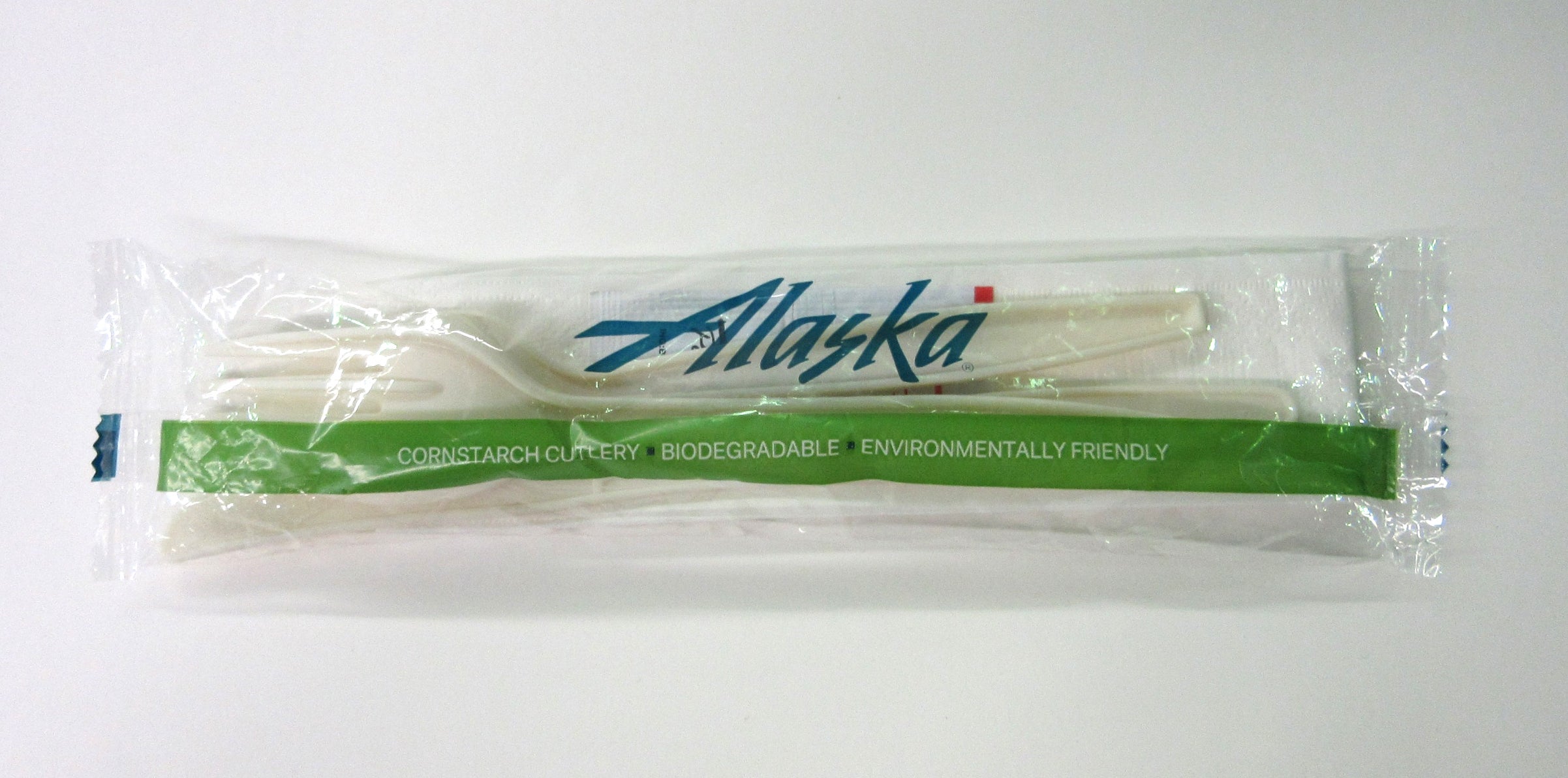 SFO Museum’s permanent aviation collection focuses on the history of commercial air transport, the airline industry, and San Francisco International Airport with regional emphasis on the West Coast and the Pacific Rim. Not only do we collect objects from the beginnings of commercial aviation, but we collect contemporary history as well in order to conserve this moment for future generations.
SFO Museum’s permanent aviation collection focuses on the history of commercial air transport, the airline industry, and San Francisco International Airport with regional emphasis on the West Coast and the Pacific Rim. Not only do we collect objects from the beginnings of commercial aviation, but we collect contemporary history as well in order to conserve this moment for future generations.
[image left]
Alaska Airlines utensil set 2015; Alaska touts its “environmentally friendly” credentials with this inflight cutlery set comprised of biodegradable, cornstarch-based flatware items
All of the above serve as examples of the actions SFO Museum is currently taking to do our part to respond to climate change. So, what’s next in our sustainability journey? Continuing to learn and go green! We plan to improve upon our reuse efforts, make thoughtful purchase of materials and supplies, and further educate ourselves in best practices to enact behavioral changes in the Museum and at home, with the end goal of diverting waste from the landfill and to increase our sustainability practices.
Sara Wagnor
Associate Curator of Museum Affairs
SFO Museum